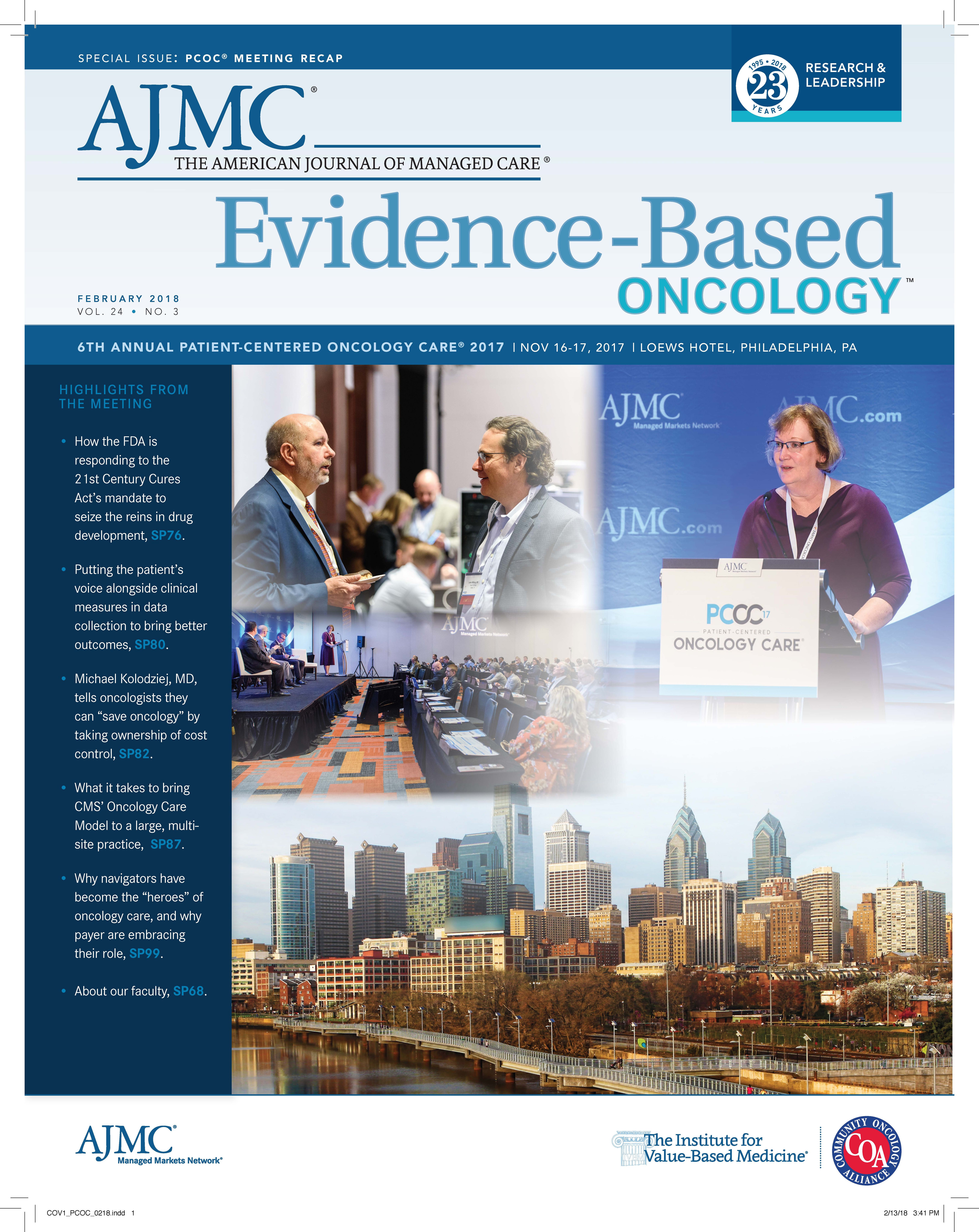- Center on Health Equity & Access
- Clinical
- Health Care Cost
- Health Care Delivery
- Insurance
- Policy
- Technology
- Value-Based Care
Digital Support to Improve Performance Outcomes
Coverage of digital technology updates from Patient-Centered Oncology Care, November 16-17, 2017.
As technology advances, the hope is that the healthcare system can translate improvements into better outcomes for patients. A panel at the Patient-Centered Oncology Care® meeting presented November 16-17, 2017, by The American Journal of Managed Care® in Philadelphia, Pennsylvania, examined the ways in which digital support can make this happen.
The panel included Brenton Fargnoli, MD, medical director for value-based care and director of product and marketing strategies at Flatiron Health, New York, New York; Felice H. LePar, MD, MPH, medical oncologist at Abington Hematology Oncology Associates in Willow Grove, Pennsylvania; Jonathan Hirsch, president and founder of Syapse in Palo Alto, California; and Spencer Hoover, assistant vice president and executive director for the Henry Ford Cancer Institute in Detroit, Michigan.
Hoover emphasized the importance of clinical trials at Henry Ford. A systematized integration of data can be used to prescreen patients and put them on trials faster. Hirsch explained that Syapse has created a standard for molecular data interoperability so that there are consistent data to compare—something that is needed for clinical trials. Now there is a clinical trial matching solution, and those who are providing the recommendations know more about the patient, which helps prevent different interpretations of eligibility criteria.
“What we’ve started doing more recently is not just trying to work directly with the sponsor to get them to structure the criteria in a computable format that can be compared against the medical record data, but really working on the up-front optimization so that the eligibility criteria can reflect, in particular, what we see in the community health systems that we work with,” Hirsch explained.
Hirsch also expressed how Syapse is able to achieve integration from different health systems. He explained how despite the competitiveness among health systems, they integrate and share information through Syapse. Therefore, data can be taken from the health systems to make outcome and quality measurements.
Fargnoli discussed the importance of data being available to both large health systems and to community oncology practices. He emphasized an integrated system in which data are entered as a natural part of the workflow and captured at the point of care—and analyzed to determine the quality measurements.
“Of course, and I’m a physician myself, we don’t always enter things in structured fields. And so, for that on the back end, we provide data completeness work lists for the teams to say these data points are specifically missing for these patients and to go through and ensure that those get completed, so you can get a whole picture, a complete picture across,” Fargnoli said.
LePar explained how digital data can analyze and account for small pieces of patient information that cannot be accounted for in another way. When the data are digital, they can be organized into codes that provide and store information in a simpler way.
“I think the point of that is—especially for small practices, rela- tively small practices like ours—we need the support. That would be something that would be impossible to do just by paper, and really that it’s an iterative process, that there are hidden complexities in things that on their face seem very simple,” LePar said.
When discussing palliative care, Hoover noted Henry Ford’s in- house care pathway initiative that works to tie together the patient care experience and engagement with all aspects of the health system. This is a start for addressing palliative care templates, however. Hoover emphasized the need for the industry as a whole to work on palliative medicine and its integration into the health system.
Furthermore, Fargnoli explained that having certain requirements, like the 13-point care plan, can be a reminder in the oncology care model and should be worked into a care plan and that these specific plans could act as a standard template in electronic medical records.
In conclusion, all panelists noted the benefits and progress that technology and digital data have made, but there is still more that can be done in the future to increase their benefits.

Exploring Racial, Ethnic Disparities in Cancer Care Prior Authorization Decisions
October 24th 2024On this episode of Managed Care Cast, we're talking with the author of a study published in the October 2024 issue of The American Journal of Managed Care® that explored prior authorization decisions in cancer care by race and ethnicity for commercially insured patients.
Listen
Legal Issues in Value-Based Care Contracts for Self-Insured Employers
December 12th 2025Self-insured employers face regulatory challenges when adopting value-based contracts, requiring careful data governance, standardized metrics, and legal frameworks to align with federal value-based care models.
Read More
From Complexity to Clarity: A Path to Value in Employer Health Plans
December 12th 2025Employers struggle to define value from health care spending amid complexity and misaligned incentives. Achieving measurable outcomes requires transparency, incentive realignment, and gradual, employee-centered change.
Read More

